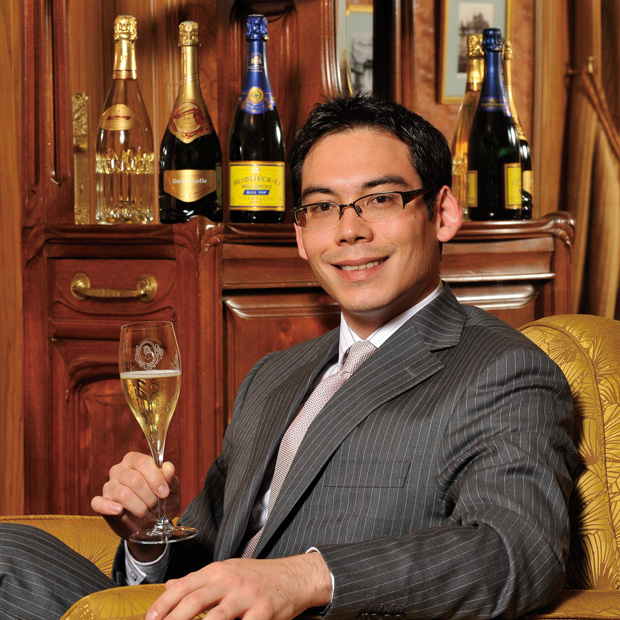Half-French, half-Japanese, Ken Moroi was born in Paris and received a Masters in Japanese Language and International Trade at Paris IX university. Moroi moved to Japan in 2004 to become a brand manager for Vranken-Pommery Monopole, the second largest Champagne house in terms of sales and the distributor in Japan of the grand Champagnes from Pommery, Heidsieck & Co Monopole, Demoiselle, Diamant and Charles Lafittes. Now the CEO of Vranken Japan, a newly established Japanese subsidiary, Moroi is responsible for all those lines, as well as Listel Wines and Port Rozes.
Tell us a little about the history of Champagne in Japan.
Champagne was introduced to Japan a very long time ago — some of our archives show traces of our Champagne distribution here dating back to 1934! Although it was introduced a long time ago, a real increase in the size of the Champagne market in Japan only took place in the beginning of the 21st century. It became more widely consumed mostly due to restaurants serving it by the glass, and wine shops giving it a sizable place on their shelves. Weddings, Christmas, birthdays and home parties are now commonly celebrated with Champagne, but we could go further: Champagne itself has so many varieties that it should not be only considered for making toasts. Food pairing and the introduction of Champagne consumption to more traditional and domestic Japanese celebrations are the next step for the development of the Champagne market.
‘One big difference (between Japan and) the rest of the world would be the much higher consumption of prestige cuvees and other vintage champagnes here’
How does the Japanese consumption of Champagne compare to that of other countries?
I would say that Japan is a big market but still has many possibilities to expand. Compared to much younger markets, such as China or Southeast Asian countries, from the consumer point of view, knowledge of Champagne and the frequency of consumption is much higher. In big towns, Champagne is available in so many different places and scenarios — it is so integrated into people’s lifestyles! Certainly this is because the metropolitan population (both among consumers and food/retail professionals) has really integrated Western food and cultural habits into their lives thanks to their travel experiences or their appetite for foreign cultures. This is true of the big metropolises; in other regions and the countryside of Japan, Champagne consumption is still very limited. But one big difference with the rest of the world would be the much higher consumption of prestige cuvees and other vintage Champagnes here.
What have been your greatest successes working in Japan?
Setting up the subsidiary for our group and hiring a local team that is solid and ambitious. Becoming the top-15 selling Champagne brand in the year of launching the company was another one. And greater successes are yet to come!
What obstacles you have encountered ?
Time! The market is so complex and is divided into so many intermediaries that setting up effective distribution takes time. As is true for any other foreign companies, overcoming local competition is always tough as well.
What has been the most surprising thing that you have learned working in Japan?
The number of meetings that can be necessary in order to get a final approval.
How has your perception of the country changed over your time here?
From a personal point of view, it went from being “the country where my father was born,” to “my second home!” More seriously, in my opinion, Japan might have lost some of its past economic glory, but it now offers many interesting lifestyle approaches, such as “eco-citizenship” or even the quest for well-being. I find this it deeply interesting.
What part of French culture would you like to introduce to Japan that isn’t well known in Japan?
More than culture, I would say, an attitude: Believe in your own taste, not only trends.
External Link:
Vranken Japan









